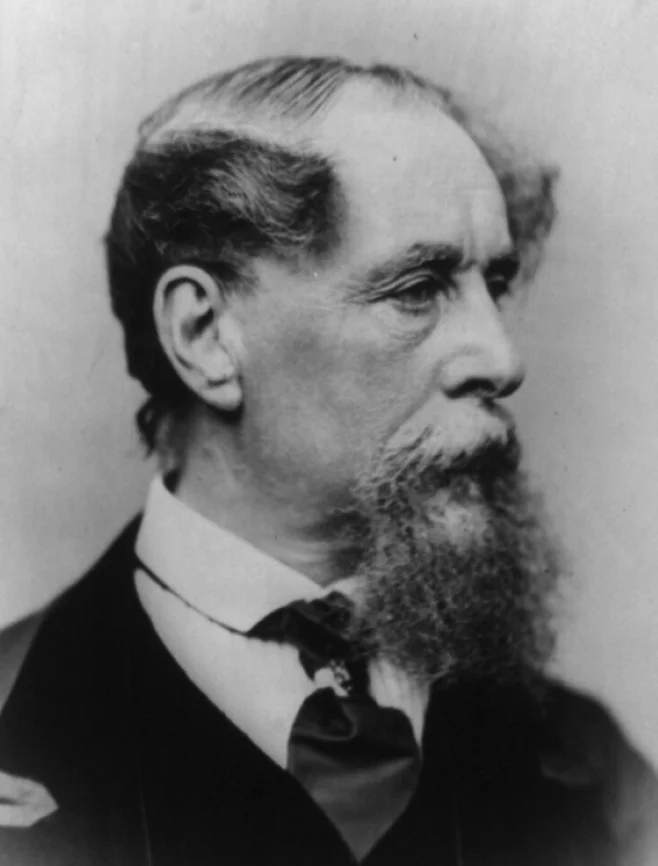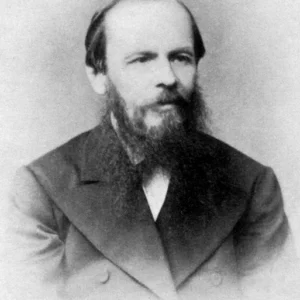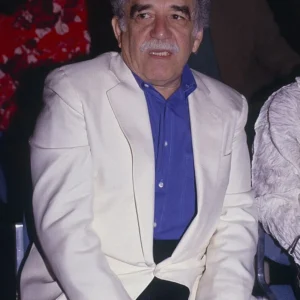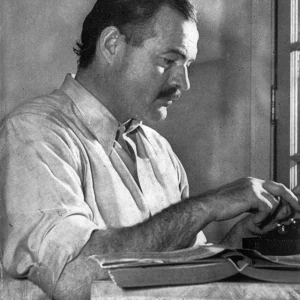Charles John Huffam Dickens, born on February 7, 1812, in Portsmouth, England, is one of the most revered novelists in the history of literature. Dickens’s works, characterized by their vivid characters, intricate plots, and keen social commentary, have left an indelible mark on English literature. Known for his storytelling prowess and his deep empathy for the plight of the poor, Dickens’s writing provides a window into Victorian England’s social and economic struggles.
Early Life and Education
Charles Dickens was the second of eight children born to John and Elizabeth Dickens. His father worked as a clerk in the Navy Pay Office, a position that allowed the family to live comfortably for a time. However, John Dickens’s financial mismanagement led to mounting debts, and in 1824, he was imprisoned in the Marshalsea debtor’s prison. This event profoundly impacted young Charles, who was forced to leave school and work at a blacking factory to support his family.
Despite the harsh conditions and limited formal education, Dickens’s passion for reading and storytelling flourished. He found solace in the works of writers such as Henry Fielding, Daniel Defoe, and Tobias Smollett. These early literary influences helped shape his narrative style and deepened his understanding of human nature.
Career Beginnings
In 1827, Dickens began working as a law clerk, a job he despised but one that provided him with valuable insights into the legal system and its often harsh treatment of the poor. He later transitioned to a career in journalism, working as a parliamentary reporter for the Morning Chronicle. His keen observational skills and witty writing style quickly gained him recognition.
Dickens’s first literary success came with the publication of his sketches under the pseudonym “Boz.” These sketches were collected in the book “Sketches by Boz,” which provided a humorous and often poignant look at everyday life in London. The success of this work paved the way for his first novel, “The Pickwick Papers,” serialized in 1836. The novel’s blend of humor, vivid characters, and engaging storytelling made it an instant hit, establishing Dickens as a literary sensation.
Literary Achievements
Early Novels
Following the success of “The Pickwick Papers,” Dickens continued to produce a string of successful novels. “Oliver Twist” (1837-1839) offered a scathing critique of the workhouse system and child labor, drawing on Dickens’s own experiences of poverty and hardship. The character of Oliver, an innocent boy enduring the brutalities of a harsh world, resonated deeply with readers.
In “Nicholas Nickleby” (1838-1839), Dickens exposed the cruelty of Yorkshire boarding schools, while “The Old Curiosity Shop” (1840-1841) introduced readers to the tragic figure of Little Nell. These early works showcased Dickens’s ability to blend social commentary with compelling storytelling.
Mature Works
Dickens’s middle period produced some of his most enduring works. “David Copperfield” (1849-1850), often regarded as his most autobiographical novel, chronicles the life of its eponymous hero from childhood to maturity. The novel’s exploration of personal growth, resilience, and the pursuit of happiness struck a chord with readers.
In “Bleak House” (1852-1853), Dickens offered a scathing critique of the legal system and its detrimental effects on individuals. The novel’s intricate plot and memorable characters, such as the resolute Esther Summerson and the sinister lawyer Tulkinghorn, have made it a timeless classic.
“Great Expectations” (1860-1861) is another masterpiece from this period. The novel follows the journey of Pip, an orphan with aspirations of becoming a gentleman, and explores themes of ambition, social class, and personal redemption. The character of Miss Havisham, with her decaying wedding dress and unending bitterness, remains one of Dickens’s most iconic creations.
Later Novels
Dickens’s later works continued to reflect his concern for social issues. “A Tale of Two Cities” (1859), set against the backdrop of the French Revolution, examines themes of sacrifice, justice, and resurrection. The novel’s opening line, “It was the best of times, it was the worst of times,” has become one of the most famous in literature.
“Our Mutual Friend” (1864-1865), Dickens’s last completed novel, explores the corrupting influence of wealth and the possibility of redemption. The novel’s intricate plot and rich character development demonstrate Dickens’s enduring storytelling prowess.
Personal Struggles and Triumphs
Despite his literary success, Dickens’s personal life was marked by challenges and contradictions. His marriage to Catherine Hogarth in 1836 produced ten children but was fraught with difficulties. The couple separated in 1858, and Dickens’s close relationship with actress Ellen Ternan scandalized Victorian society.
Dickens’s tireless work ethic and demanding schedule took a toll on his health. He embarked on grueling reading tours, both in the UK and the US, where he captivated audiences with dramatic readings of his works. However, these tours also contributed to his declining health, and he suffered a stroke in 1865.
Despite these personal and health challenges, Dickens remained committed to his writing and social activism. He was a fervent advocate for social reform, using his novels and public platform to highlight issues such as child labor, education, and the plight of the poor.
Impact on Literature and Society
Charles Dickens’s impact on literature and society is profound. His novels, with their vivid characters and intricate plots, have captivated readers for generations. Dickens’s ability to blend humor, pathos, and social commentary has made his works enduring classics.
Beyond his literary achievements, Dickens’s commitment to social reform left a lasting legacy. His novels brought attention to the harsh realities of Victorian society, influencing public opinion and contributing to social change. Institutions such as the Ragged Schools and various charitable organizations benefitted from his advocacy and support.
Legacy and Influence
Dickens’s legacy extends far beyond his own time. His works have been translated into numerous languages and adapted into countless films, television series, and theatrical productions. Characters such as Ebenezer Scrooge, Oliver Twist, and Pip have become cultural icons, representing universal themes of redemption, resilience, and hope.
The Charles Dickens Museum in London, located in his former home, offers a glimpse into the life and work of this literary giant. The museum houses an extensive collection of manuscripts, letters, and personal artifacts, preserving Dickens’s legacy for future generations.
Conclusion
Charles Dickens’s life and work embody the spirit of Victorian England. His ability to capture the complexities of human nature and the social injustices of his time has left an indelible mark on literature. Through his novels, Dickens invites readers to explore the intricacies of the human experience, offering both entertainment and profound social critique.
From his humble beginnings to his status as one of the greatest storytellers in literary history, Charles Dickens’s journey is a testament to the power of resilience, creativity, and empathy. His contributions to literature and society continue to be celebrated, ensuring that the legacy of Victorian England’s greatest storyteller will endure for generations to come.



